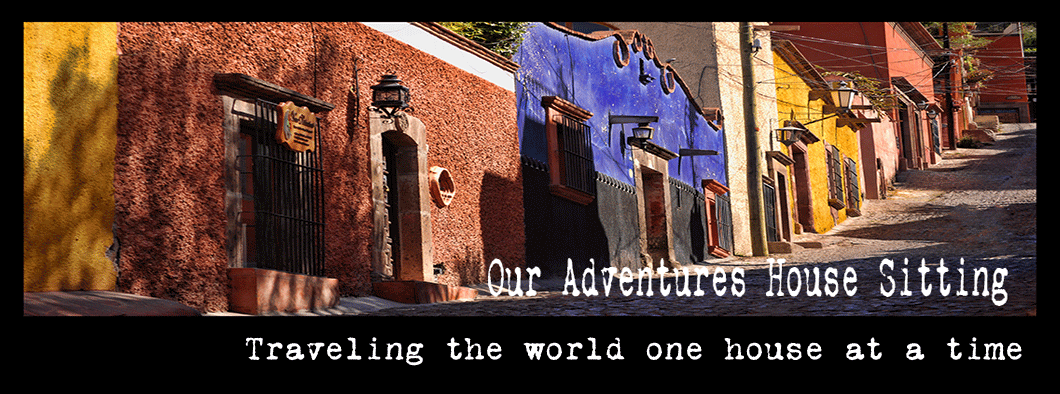Lisbon was once a grand city and one of the wealthiest in Europe during the 15th and 16th centuries when Portugal's explorers sailed the world opening new trade routes to India and Africa. Then in 1755 a massive 9 in magnitude earthquake just offshore leveled two thirds of the city. The quake and the subsequent tsunami and fires destroyed the city killing an estimated 90,000 people - about a third of Lisbon's population. A more modern Lisbon was rebuilt and was the first city to have any type of quake proof construction.
The area that survived the quake intact is called the Alfama and dates back to around the 6th century. It's easy to get lost on the narrow cobbled streets that twist and turn up the hill to Sao Jorge Castle. The Alfama couldn't be more different from the historic downtown area known as the Baixa. This area of Lisbon was rebuilt after the quake on a grid plan of straight streets, wide boulevards, and large public squares. The Bairro Alto (upper town) and the trendy neighborhood of Chiado sit on the hill above the Baixa. Then there is Belem, a suburb of Lisbon that is about three miles from downtown. Belem is where the King of Portugal and the aristocracy rebuilt after the quake and where the current president of Portugal has his residence. It is also the site from which early explorers set sail and Portugal's most famous explorer Vasco da Gama is laid to rest at the Monastery of San Jeronimos.
Each of these distinct areas make it seem as if Lisbon is many cities all rolled into one. Rick Steves' described the city as a "ramshackle but charming mix of now and then" and that's really how Lisbon felt to us.
The Alfama
 |
The oldest part of Lisbon is now home to many of the city's newest residents -
immigrants from Brazil and the Ukraine. |
 |
| Narrow streets are barely passable by cars. |
 |
| The oldest part of the city shows its age. |
 |
| Sao Miguel sits above the Alfama neighborhood. |
 |
| Few homes in the Alfama have their own so there are public laundries and bathrooms. |
 |
| Antique 1920 trolley's navigate the wider streets in the Alfama. |
 |
The Alfama was at one time a Moorish neighborhood and the influence is
evident in Lisbon's architecture and widespread use of tile. |
 |
| A little bit of springtime in the Alfama. |
The Baixa
 |
| Palace Square and Lisbon's Arch of Triumph. |
 |
Look familiar? The same company that constructed the Golden Gate Bridge in
San Francisco constructed this bridge over the Rio Tejo. |
 |
| The circa 1900 facade of the Rossio Train Station. |
 |
| The cobbled streets are works of art. |
 |
| There are lots of little shops and restaurants in the Baixa. |
 |
Dried salted cod is a favorite dish but must be soaked in water
for three days prior to preparation. |
 |
| We recognize the fruit but just could not pronounce the names. |
 |
Jinja is a potent cherry flavored liquor sold in local shops.
A Euro buys you a shot glass full which is all you need. |
 |
| Colorful vandalism. |
 |
| The Avenida da Liberdade. |
The Bairro Alto and Chiado
 |
Rue Garrett in Chiado was a central location for our apartment.
Quiet in the morning... |
 |
| ....but with a completely different vibe as the day turned into evening. |
 |
| Tile is used to adorn both the exterior... |
 |
| and interior of buildings. |
 |
| Some of the older hand painted tiles are quite detailed. |
 |
| Some have more traditional Moorish designs. |
 |
| Elaborate and simple patterns. |
 |
| Some tile work has a message. |
 |
| View of the Rio Tejo from the Miradouro de Sao Pedro de Alcantara. |
 |
| View of the Sao Jorge Castelo. |
Belem
 |
| Monastery of Jeronoimos |
 |
| Facade detail of Monaster of Sao Jeronimos. |
 |
Belem is home to several of Lisbon's museums including the National Coach Museum.
A remarkable collection of royal coaches dating from the early 1600's. |
 |
| The Maritime Museum houses the antique royal barges used for sailing on the Rio Tejo. |
 |
Casa Pasteis de Belem is the birthplace of the sublime custard tart pastel de nata.
Since 1837 the recipe for this soft, warm, sweet custard in a light as air,
crispy, flakey pastry shell has been a closely guarded secret. |
 |
These tarts look simple but they are one of the best pastries
we have ever tasted. Positively mouthwatering and even better
with a bica a.k.a. espresso. |
We hope that you've enjoyed Lisbon!

























































